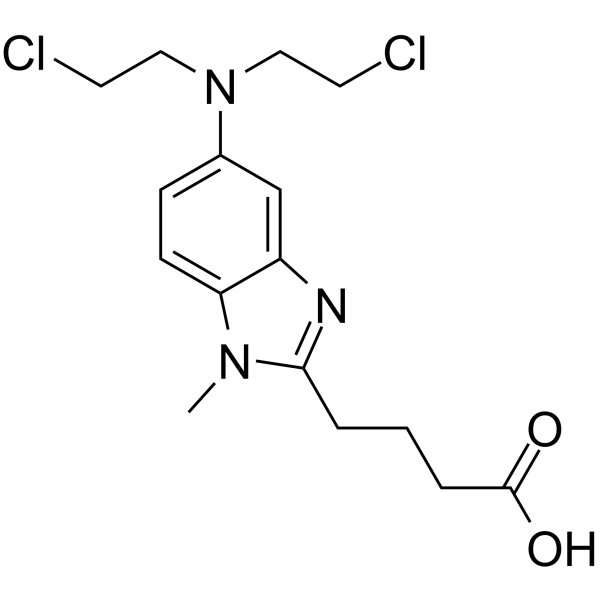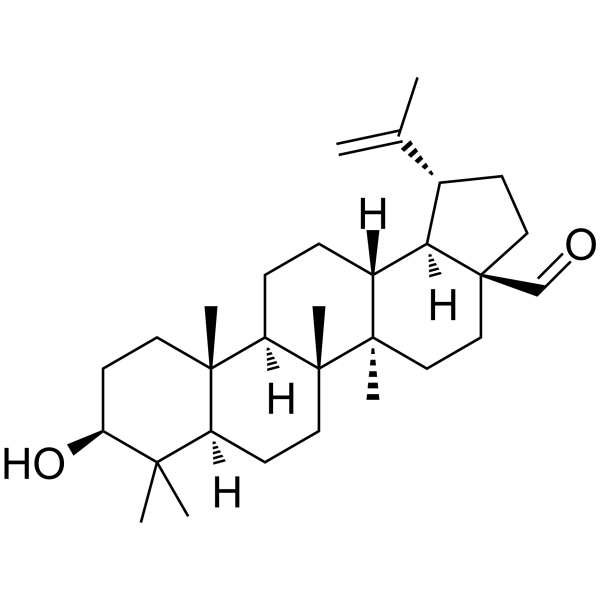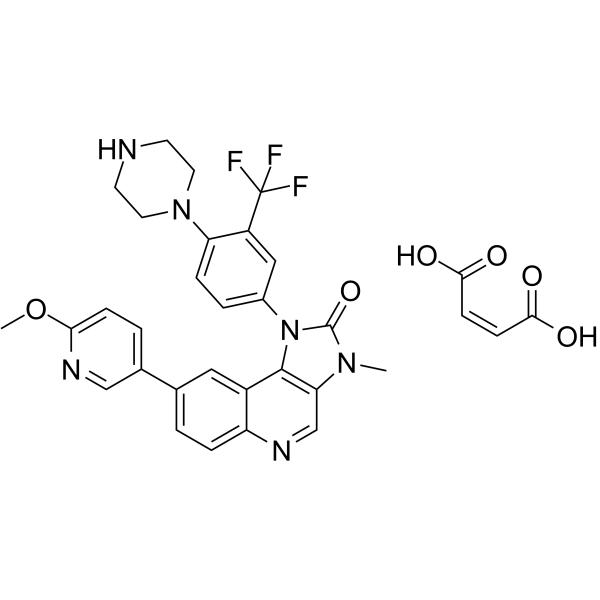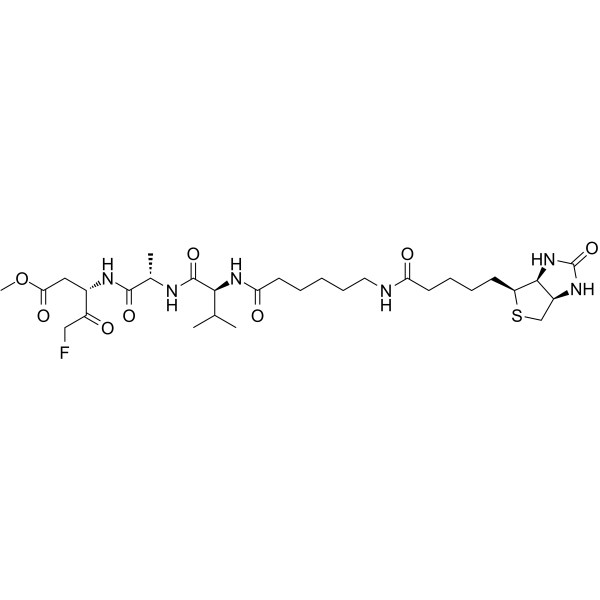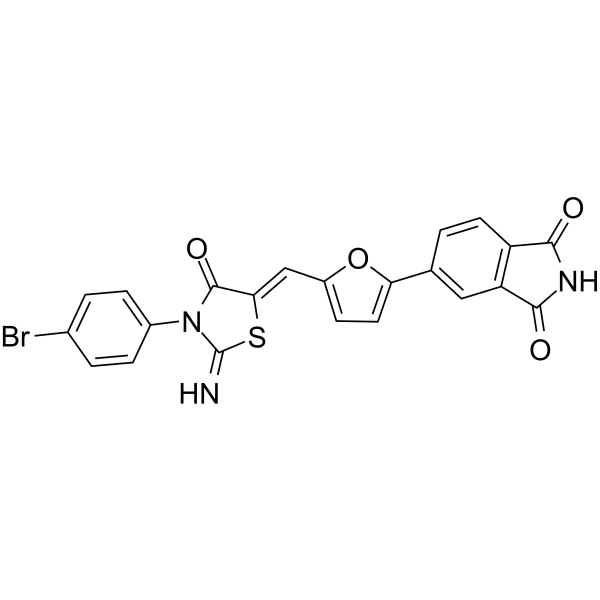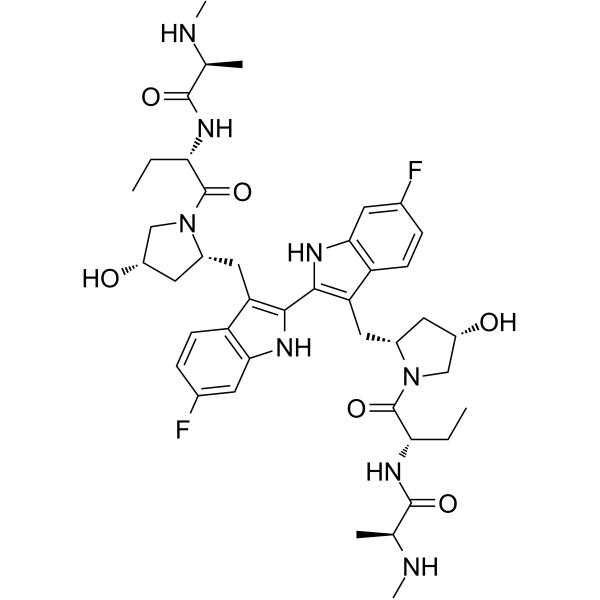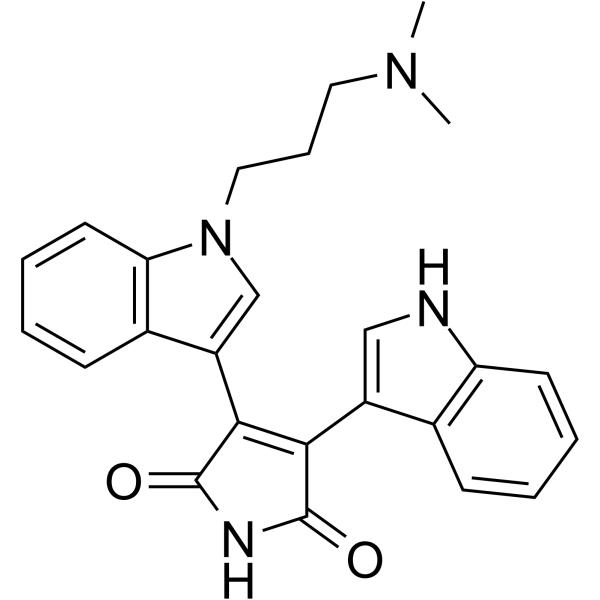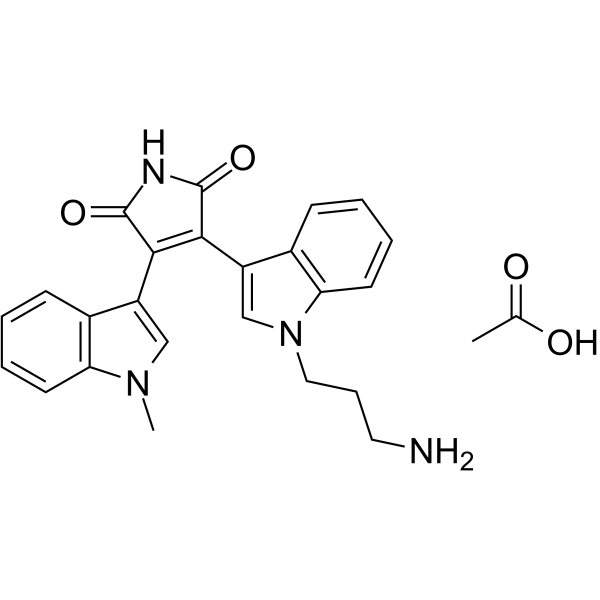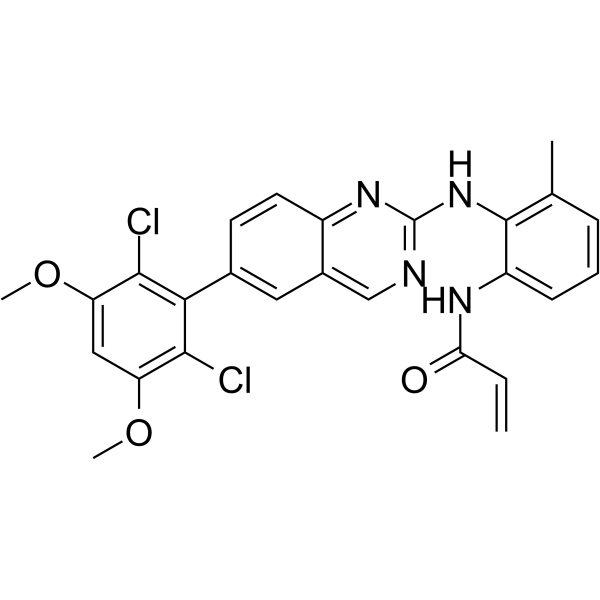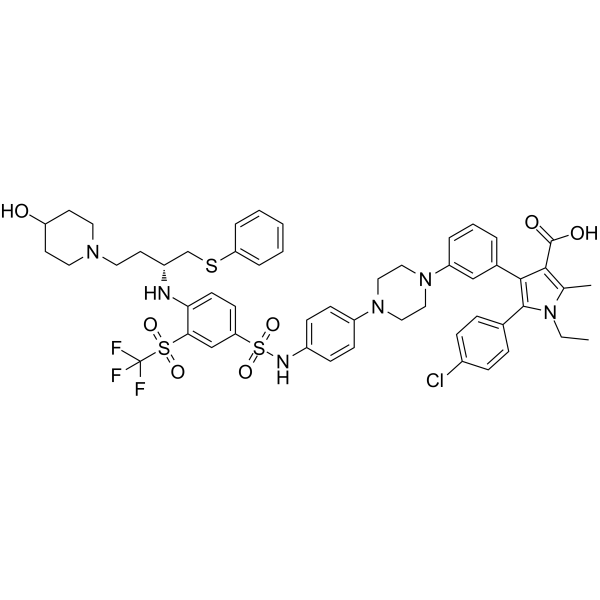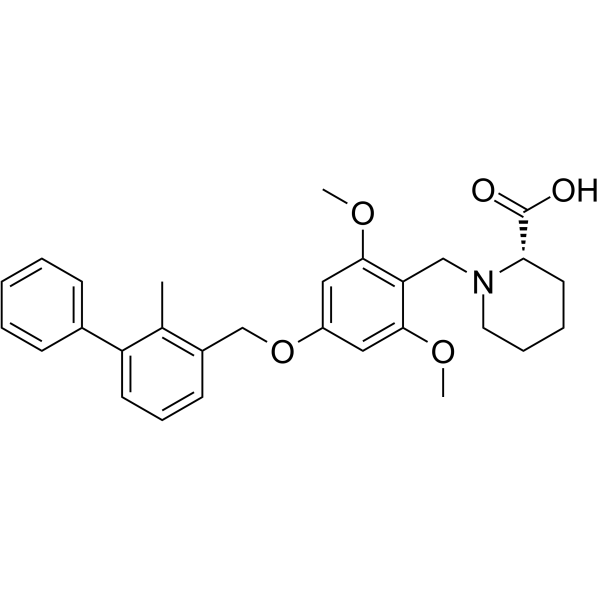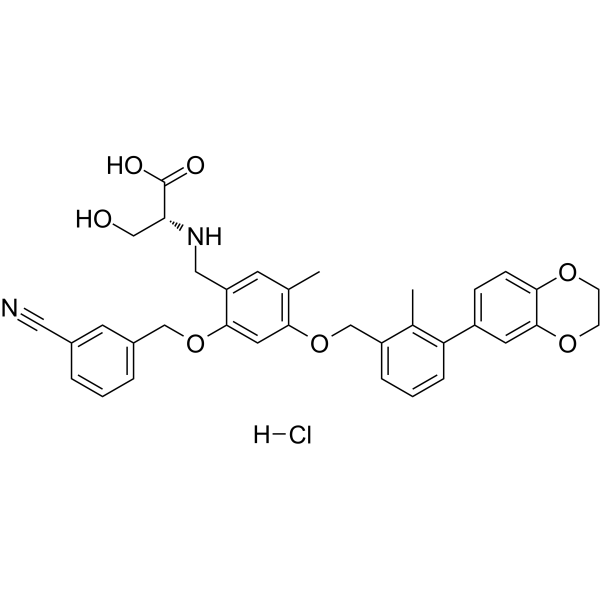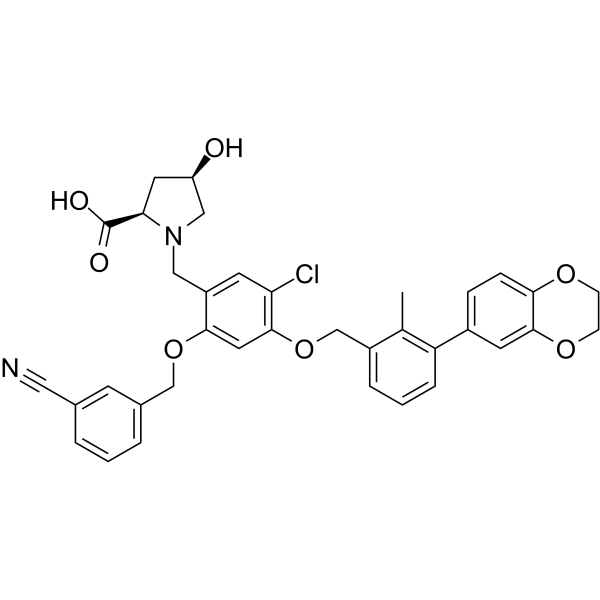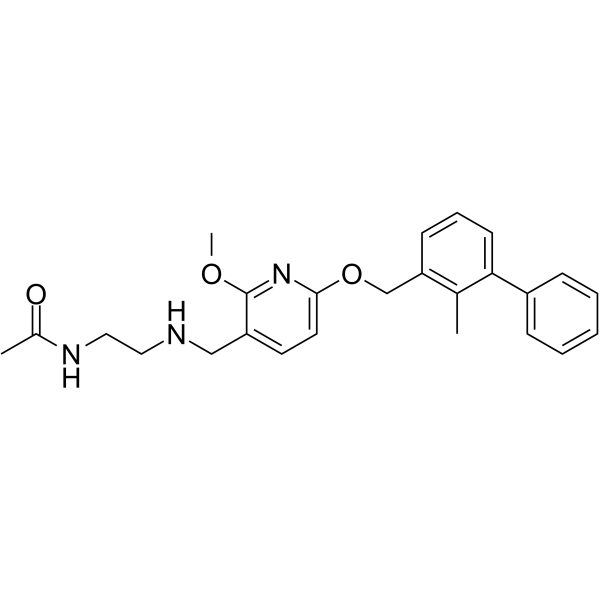|
BP10714
|
Bendamustine
|
|
|
|
|
Bendamustine for the treatment of Non-Hodgkin Lymphomas and Chronic Lymphocytic Leukemia
|
|
BP10371
|
Benzyl ferulate
|
|
|
|
|
Benzyl ferulate has antimicrobial activity. It also shows good anti-proliferative against three gastro-intestinal cancer cell lines(HCT-116 colon carcinoma, KYSE-30 oesophageal squamous cancer, and NCI-N87 gastric carcinoma).
|
|
BP10975
|
Beta-mangostin
|
|
|
|
|
Beta-Mangostin (β-Mangostin) is a xanthone compound with antibacterial and antimalarial activities. Beta-Mangostin (β-Mangostin) present in Cratoxylum arborescens and exhibits antimycobacterial activity against Mycobacterium tuberculosis with an MIC of 6.25 μg/mL. Beta-Mangostin possesses in vitro antimalarial activity against Plasmodium falciparum, with an IC50 of 3.00 μg/mL. beta-Mangostin has potent anticancer activity against various cancers (such as hepatocellular carcinoma, leukaemic).
|
|
BP10368
|
Betulinaldehyde
|
|
|
|
|
Betulinaldehyde has the inhibition of Saccharomyces sp and alpha-glucosidase. Betulinaldehyde induces apoptosis in mouse B16 2F2 cells. Betulinaldehyde has anti-proliferative activity against mouse +SA mammary epithelial cells.
|
|
BP10289
|
BGT226 maleate
|
|
|
|
|
BGT226 (NVP-BGT226) is a class I PI3K/mTOR inhibitor for PI3Kα/β/γ (IC50: 4/63/38 nM) .
|
|
BP10164
|
Biotin-VAD-FMK
|
|
|
|
|
Biotin-VAD-FMK is a cell-permeable, irreversible biotin-labeled inhibitor of caspase. It is used to identify active caspases in cell lysates.
|
|
BP10489
|
Bioymifi
|
|
|
|
|
Bioymifi is a novel and potent small-molecule activator of the TRAIL receptor DR5 in human cancer cells.
|
|
BP10025
|
BiP inducer X
|
|
|
|
|
BiP inducer X is a selective inducer of immunoglobulin heavy chain binding protein (BiP)/GRP78 and an ER chaperone inducer. BiP inducer X prevents cell death in neurons and retinal cell lines.
|
|
BP10315
|
Birinapant
|
|
|
|
|
Birinapant is a synthetic small molecule that is both a peptidomimetic of second mitochondrial-derived activator of caspases (SMAC) and inhibitor of IAP (Inhibitor of Apoptosis Protein) family proteins, with potential antineoplastic activity.
|
|
BP10235
|
Bisacurone
|
|
|
|
|
Bisacurone has anti-oxidant, anti-inflammatory, and anti-metastatic activities, it may have a protective effect against ethanol-induced liver injury by suppressing hepatic oxidation and inflammation.
|
|
BP10374
|
Bisindolylmaleimide I
|
|
|
|
|
GF109203X is a potent and highly selective protein kinase C (PKC) inhibitor with a Ki of 14 nM.
|
|
BP10451
|
Bisindolylmaleimide VIII acetate
|
|
|
|
|
Bisindolylmaleimide VIII acetate is a potent and selective PKC inhibitor (IC50: 158 nM for rat brain PKC). It has IC50s of 53, 195, 163, 213, and 175 nM for PKC-α, PKC-βI, PKC-βII, PKC-γ, PKC-ε, respectively.
|
|
BP10896
|
BKI-1369
|
|
|
|
|
BKI-1369 is a bumped kinase inhibitor. BKI-1369 increases hERG-inhibitory activity (IC50:1.52 μM).
|
|
BP10631
|
BLU9931
|
|
|
|
|
BLU9931 is the first selective small molecule inhibitor of FGFR4.
|
|
BP10456
|
BM 957
|
|
|
|
|
BM 957 is an effective Bcl-2 and Bcl-xL inhibitor (Kis: 1.2 and <1 nM; IC50s: 5.4 and 6.0 nM).
|
|
BP10729
|
BMS-1
|
|
|
|
|
PD1-PD-L1 inhibitor 1 (PD1-PD-L1-IN-1) is an inhibitor of the PD1-PD-L1 protein-protein interaction. It also acts as an immunomodulator. Programmed death ligand 1 (PD-L1) is a protein in humans that is encoded by the CD274 gene and the upregulation of PD-L1 allows Ys to evade the host immune system. High tumor expression of PD-L1 was associated with increased tumor aggressiveness and a 4.5-fold increased risk of death.
|
|
BP10995
|
BMS-1001
|
|
|
|
|
BMS-1001 is a potent inhibitor of PD-1/PD-L1 interaction(IC50 : 2.25 nM, in a homogenous time-resolved fluorescence binding assay).
|
|
BP10996
|
BMS-1001 hydrochloride
|
|
|
|
|
BMS-1001 hydrochloride is an orally active inhibitor of human PD-1/PD-L1 immune checkpoint with low-toxicity in cells.BMS-1001 alleviates the inhibitory effect of the soluble PD-L1 on the T-cell receptor-mediated activation of T-lymphocytes. BMS-1001 is capable of alleviating the PD-1/PD-L1 immune checkpoint-mediated exhaustion of Jurkat T-lymphocytes.
|
|
BP10817
|
BMS-1166
|
|
|
|
|
BMS-1166 is a potent PD-1/PD-L1 interaction inhibitor.
|
|
BP10730
|
BMS-202
|
|
|
|
|
PD1-PDL1 inhibitor 2 is an inhibitor of the PD-1 (Programmed death- 1) /PD-Ll (Programmed death-ligand 1) protein/protein interaction, extracted from patent WO/2015034820 A1.
|
